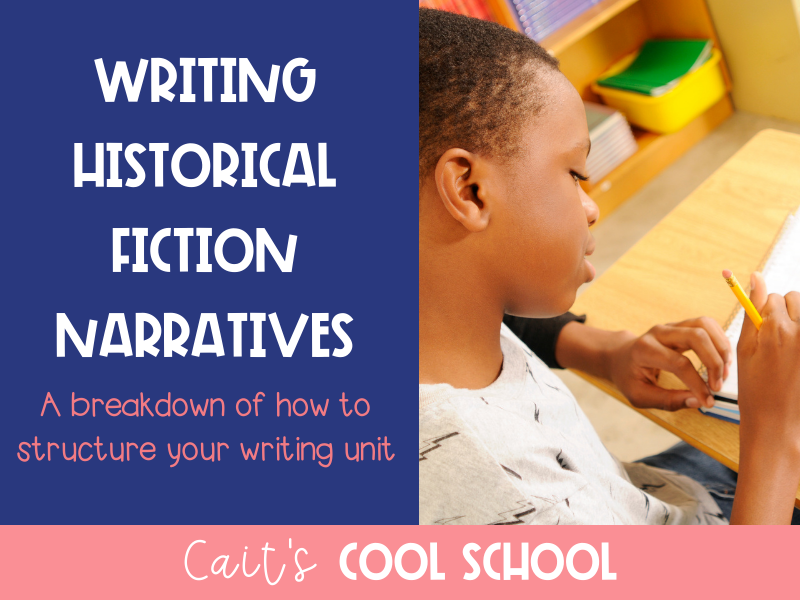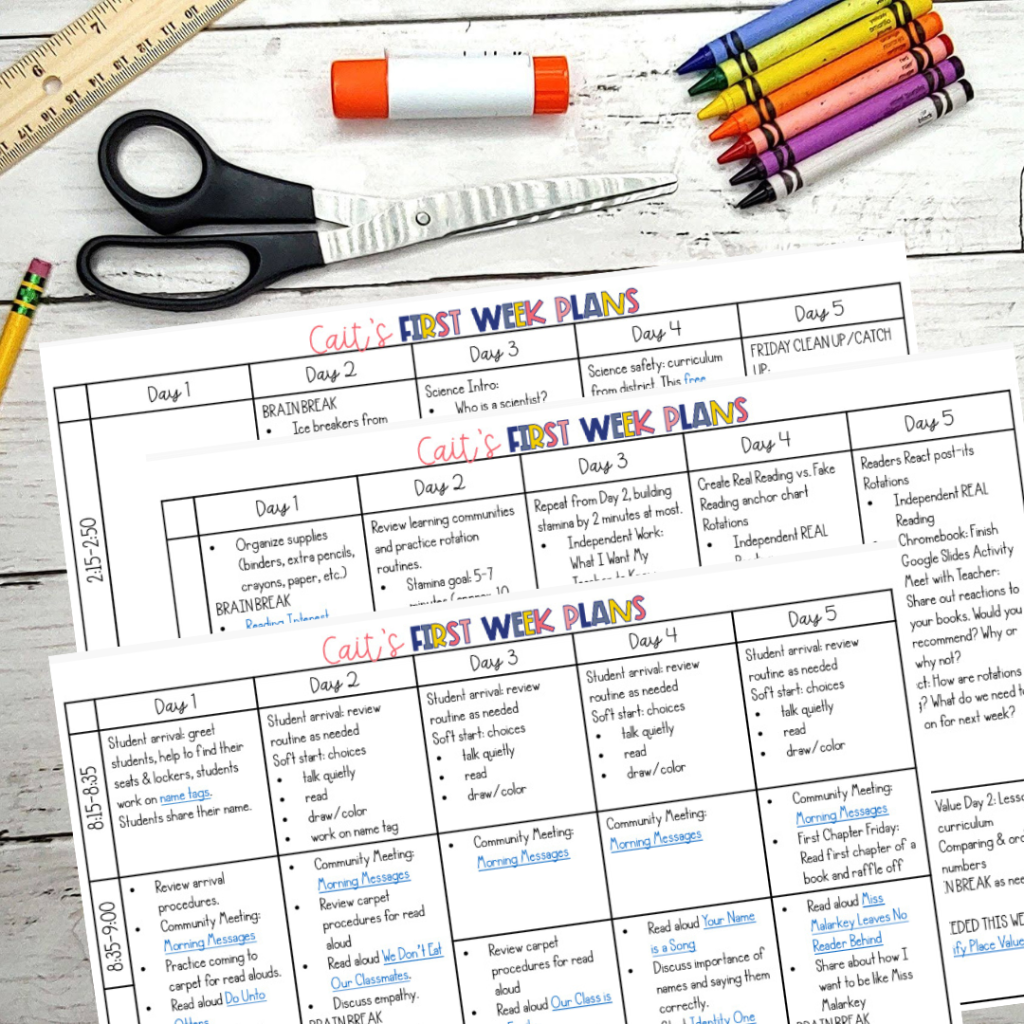It’s all about the setting when teaching how to write historical fiction narratives. Generally I like to teach this type of unit after exploring the elements of historical fiction (read about that activity here) and completing a novel study (more here). During the novel study, we start to truly see how the setting affects huge parts of the plot, which helps us to plan for our own writing.

Once it’s time to write our own stories, I have to make the big decision- do we research one setting together or do I let everyone pick their own setting? This might vary class to class and knowing how well your students research and comprehend historical concepts. For example, when we read Number the Stars, my class did background on World War II, identifying the causes and major events of the war itself, especially Denmark and America’s involvement in the war. After that work, it only makes sense to write our historical fiction narratives set in that time period.
If you haven’t done a novel study, researching the setting is the first step! Students will need to understand how this affects every other aspect of the story. I built in the option to research the setting with the unit I planned.
After completing our research, it’s time to see how the setting affects parts of our story, starting with our main character. Developing a character builds on students’ knowledge of character traits to start. It also allows them to create a mirror (if they want) of themselves to place into this historical setting. The setting will affect parts of their character, especially physical appearance like clothing and hair styles. (This can be a fun part of the research!) We also come up with a few supporting characters to interact with our
After these major prep pieces, students develop a story arc, including exposition (which we’ve started), conflict, rising action, climax, falling action, and resolution. I try to confer and check in with students regularly during this process. In any narrative, it’s important to make sure their story structure makes sense. For historical fiction, checking for that accuracy piece is important because I really want my students to see how setting affects their story.
When we’re ready, there are three must-have mini-lessons for me: elaboration (show don’t tell), punctuation , and paragraphs. Why these three? Elaboration will incorporate adding more dialogue and details (hopefully!). Details will help to emphasize the setting and how its unique. Punctuation will be a way to emphasize the dialogue I’m hoping my students add too! Finally, paragraphs are another part of adding dialogue and setting because new paragraphs are started often.
What do you think? Are you ready to tackle a historical narrative writing unit?
If you’re looking for a ready-to-go unit, check out this print & digital writing unit.

The unit includes:
-complete unit plan
-graphic organizers for research, developing the setting & characters, and more
-mini-lessons on elaboration, punctuation, and paragraphs
P.S. The digital mirrors the print version to allow for easy differentiation!

Want more help with planning mini-lessons for your writing units? Try out this minilesson planning template for free!





 The first FIVE days of lesson plans for the beginning of the year.
The first FIVE days of lesson plans for the beginning of the year.